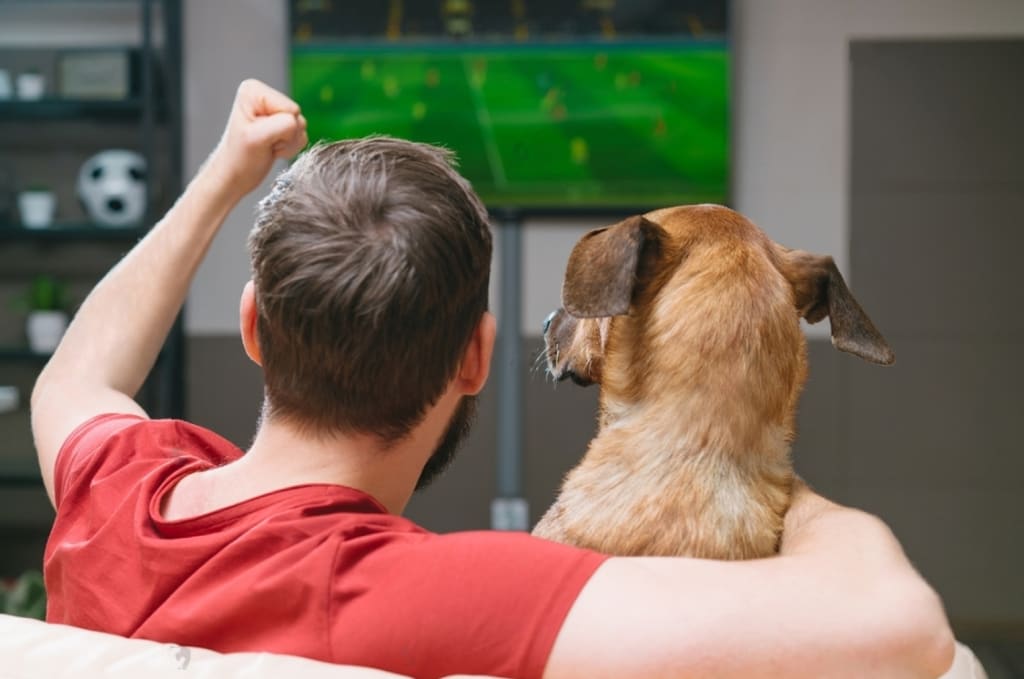
As you wind down in the evening, preparing to bid farewell to the day, your loyal companion makes a nightly entrance into the living room, eyes fixed on the television screen. What's going on in that furry head of theirs? Let's dive into the fascinating world of canine behavior and decode the mysteries of your pup's actions.
Back in 2012, a dog food company in the UK attempted an unusual advertising experiment. A commercial was crafted with special high-frequency sounds, inaudible to humans but perfectly audible to dogs. The goal? To captivate dogs' attention, making them enthusiastic about the product. However, reality didn't align with the theory. Most dogs showed little to no reaction, indicating that manipulating pets with ads might not be as effective as it is with humans.
Yet, despite this failed experiment, dogs exhibit a genuine interest in watching TV. You might have observed your furry friend reacting to moving objects and images on the screen, as if sharing the same visual experience. Interestingly, dogs perceive the world on TV in shades of yellow and blue, unable to distinguish between green and red hues.
As your pooch sits in front of the screen, the experience differs from yours. While your brain processes movement at 16 to 20 frames per second, a dog requires more than 70 frames per second to detect motion. So, that old TV might resemble a flip book to them, while modern TVs with faster frame rates hold greater appeal.
What captures a dog's attention on TV? Much like in real life, they respond to familiar cues – squeaking toys, commands, and the barks, growls, and yips of other dogs. However, if the screen doesn't feature anything related to dogs, your pet might remain disinterested.
Now, imagine encountering a friend's dog for the first time. Before eagerly reaching out to pet the adorable pup, consider a few key steps. Seek permission from the owner, approach cautiously, and let the dog initiate contact. Avoid direct eye contact, as, in the canine world, it can be perceived as rude.
Once you've successfully approached, pay attention to the dog's body language. A curved body, wagging tail, and circling behavior indicate excitement and a desire to interact. However, be vigilant for signs of discomfort, such as showing teeth, growling, or a stiff tail, signaling a need to back off.
Returning home to your own faithful companion, you find Riley, your dog, eagerly awaiting your return. To deepen your bond, occasionally get down to your dog's level, offering affection and playtime. Dogs appreciate these gestures and reciprocate with their unique expressions of joy.
Ever wondered why dogs have an affinity for sticks? It's a blend of natural instincts for retrieval and the enjoyable texture of gnawing. Dogs also find pleasure in carrying sticks, reminiscent of their ancestral hunting instincts.
Intriguingly, dogs may engage in zooming, a burst of energetic running, to express happiness. Another behavior involves shaking toys vigorously while playing, a trait inherited from their wolf ancestors.
Observing your dog licking its paws is normal, serving as a grooming mechanism. However, persistent licking may signal an underlying issue, prompting a closer examination of the paw.
As your dog basks in the joy of a walk, you might notice the endearing habit of rolling onto its back, inviting a belly rub. This behavior signifies trust and comfort, as your furry friend enjoys the connection with you.
Tail wagging, a quintessential canine expression, holds various meanings. Pay attention to the wagging direction, as it can convey happiness, excitement, or even a potential threat. Tail position and body language offer valuable insights into a dog's emotional state.
Finally, the symphony of canine communication includes whimpers and cries, each carrying a distinct message. Dogs employ these vocalizations to express excitement, seek attention, or convey discomfort. Understanding your dog's unique language fosters a deeper connection and a harmonious companionship.
As you revel in the delightful nuances of your dog's behavior, remember that each tail wag, bark, or playful gesture contributes to the beautiful bond between humans and their four-legged friends.
About the Creator
Enjoyed the story? Support the Creator.
Subscribe for free to receive all their stories in your feed. You could also pledge your support or give them a one-off tip, letting them know you appreciate their work.






Comments
There are no comments for this story
Be the first to respond and start the conversation.